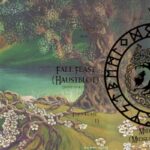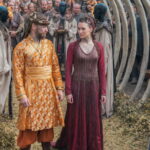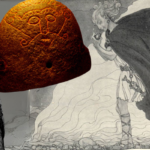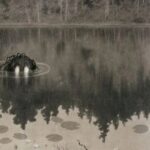Since the Vikings were raiders, it is not hard to imagine them wealthy pirates, bathing in gold acquired on distant shores.
But some of the richest and most interesting pieces of gold that survive from the Viking period come from the pre-raiding era.
These are bracteates and gullgubber.
Germanic Bracteates
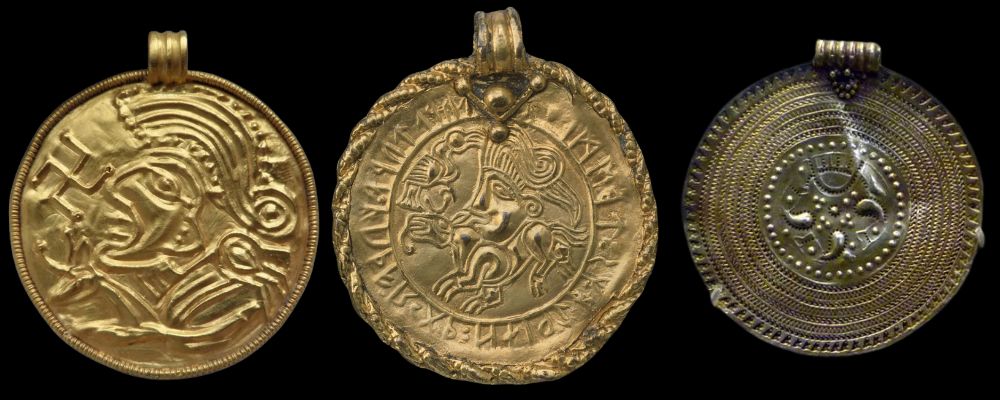
Bracteates are thin, single-sided gold medallions that look a bit like coins that have been rolled thin.
That is not a terrible description, since in Germanic Europe during the Migration Period (400-600 CE), they were largely inspired by Roman coins and were even made from Roman coins that had been melted down for their gold.
More than 1,000 bracteates made from fine gold have been found in Denmark, Northern Germany, and Sweden.
While they look like coins, they were rimmed with gold beads and fitted with a loop, suggesting that they were meant to be worn as amulets.
The surviving bracteates can be divided into several different types.
- A – A human face, mimicking the portraits on Roman coins
- B – Between one and three humans standing or seated in a formation, and sometimes
- C – A larger-than-life head above a four-legged animal, assumed to be a horse
- D – Stylized animals
- E – A triskele under a circular feature within a circular band
For lovers of the Viking world, type C bracteates are the most interesting as this is interpreted as being Odin, or his Germanic counterpart Wodan, and his horse Sleipnir.
Birds and a spear also often appear in the image, both of which had become common attributes of Odin by the Viking Age-proper.
Odin had two ravens, Huginn and Muninn, who acted as his eyes and ears in the world, and he was rarely seen without his spear Gungnir.
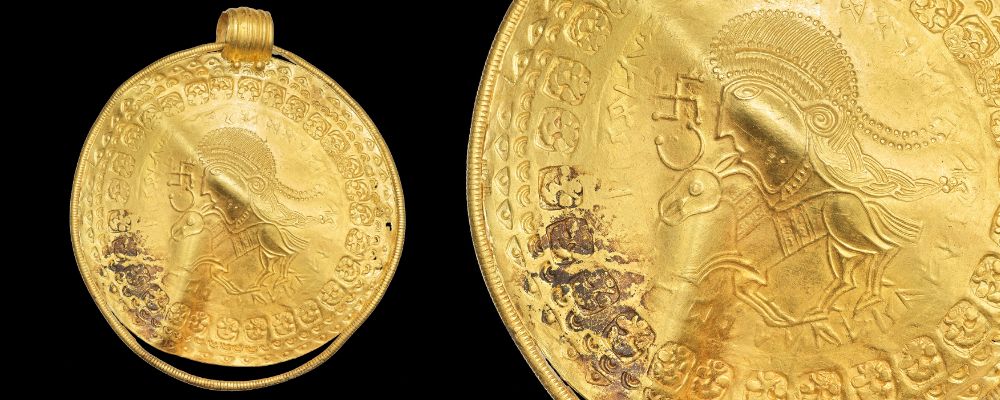
That this image should indeed be interpreted as representing Odin was only confirmed in 2020 when a bracteate was found at Nordendorf in Southern Germany, with this imagery motif and the runic inscription “Odin” (depicted above).
The bracteate also features a swastika, which was common on bracteates more generally.
It is unclear what exactly the symbol meant in this context (though clearly had no relation to the modern corrupted meaning).
The inscription, in Elder Futhark, the runic alphabet used before Younger Futhark was adopted in the Viking Age, is also interesting.
More than 100 of the surviving bracteates are inscribed and make up about a third of all surviving Elder Futhark inscriptions.
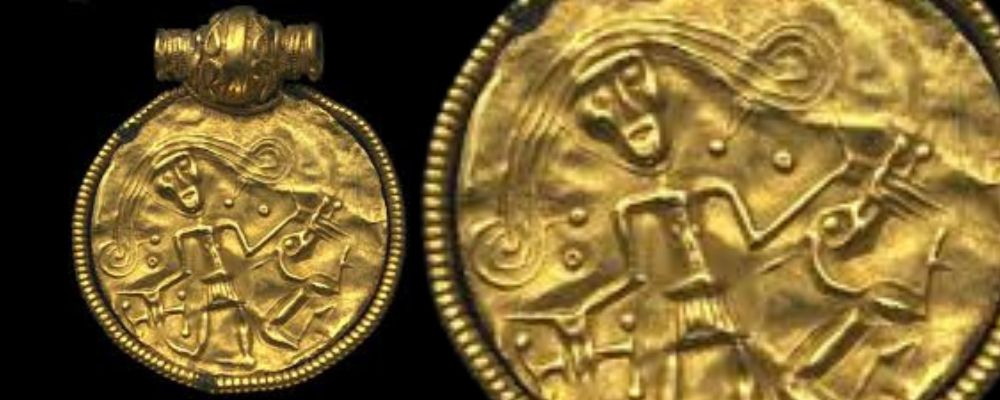
Other Norse gods may be identifiable on surviving bracteates.
One example from Trollhattan in Sweden, shown above, seems to show Tyr and Fenrir, as it shows a man with his hand in the mouth of a wolf.
The god Tyr famously sacrificed his hand to be eaten by Fenrir to imprison the dangerous wolf.
This would be interesting, as many scholars say that Tyr was the chief god of the proto-Vikings, and then had his position usurped by Odin.
If this is the case, it would show that the story of Tyr and Fenrir is an old one and probably predates this change in hierarchy.
Often found in graves, many gold bracteates were clearly worn as jewelry.
They are designed to be worn as an amulet and many show signs of wear and tear.
But some grave bracteates are in pristine condition, suggesting that they were probably made for a specific ritual purpose, probably related to funeral rites, and never worn.
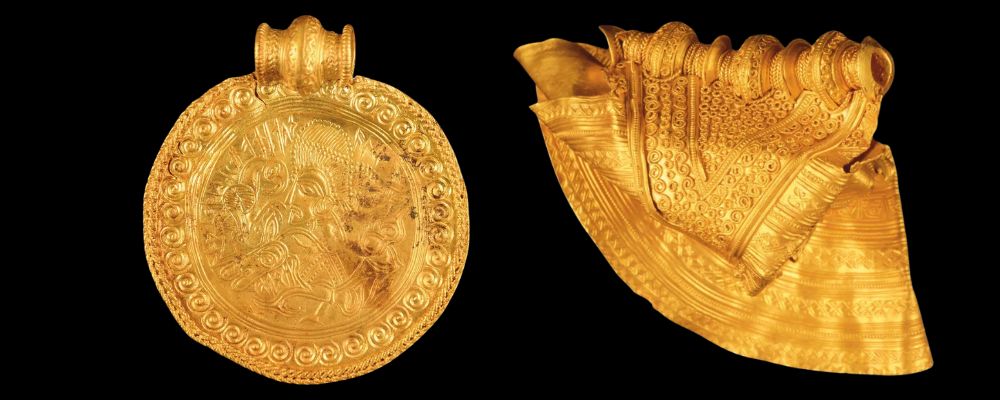
Even more interesting is the group of bracteates found by a metal detectorist at Vindelev, near Jelling in Denmark, some of which are shown above.
A group of 18 gold objects, most of them bracteates, seem to have been deposited together as a hoard in an Iron Age longhouse.
The objects included four Roman coins modified to be worn as amulets, plus eight A-style Bracteates and five C-style bracteates.
The group also includes the largest bracteate ever found, 13.5cm in diameter.
Interestingly, this and several other bracteates in the hoard were symmetrically folded, suggesting that this was done deliberately.
Together, this evidence suggests that this group of medallions was placed in the ground deliberately as offerings to the gods.
Objects of value were often placed in the ground to transport them to the gods, like ships.
Bracteates seem to have stopped being produced around the year 600.
They may have been replaced by smaller gullgubber.
Votive Gullgubber
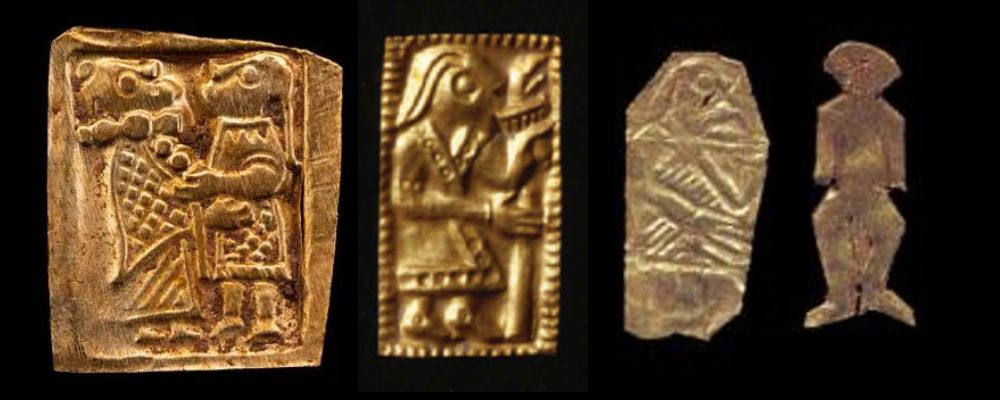
In the 18th century, a group of villages in Scania found a number of small gold leaf objects in dunes called gullgubber, meaning “little old man of gold”.
These dunes have their name to the small gold objects, more than 3,000 of which have now been found around Norway, Sweden, and Denmark.
All the discovered gulgubbar date to the pre-Viking age, between the years 550 and 800.
They are small, thin pieces of gold usually no more than 2cm in length, decorated with a variety of figures.
Like the bracteates before them, they can be broken into a number of types.
- Sacred Marriage – many gullgubber show a man and woman facing each other, sometimes with a branch or tree visible between them. This has been interpreted as representing the god Freyr in his sacred marriage to the giantess Gerdr, and the tree is indicative of the wood Barri where they met to be married. They are always formally clothed and often have bent knees, making it appear as if they are dancing. While the exact identification of the figure cannot be confirmed, a reference to marriage for fertility seems likely.
- Single figures that can be male, female, or animals, which can be stamped on the gold leaf or take the form of a simple cutout. These may represent other gods. One example survives with a figure holding a thumb to their mouth, which was usually considered an attribute of a seer.
- There are also wraith figures that seem to be distorted. There are suggestions that these are wraiths that represent the dead, but again, this cannot be confirmed.
Unlike bracteates, these items aren’t found in burials and are usually found deposited in large groups.
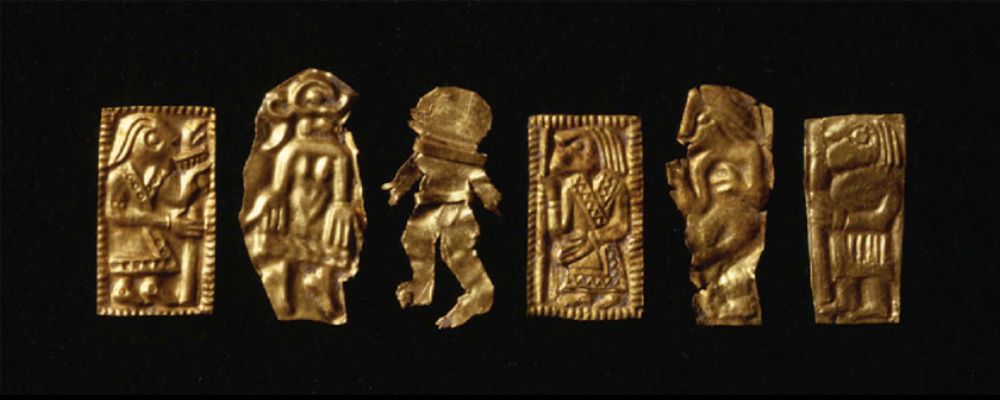
Around 2,350 of them have been recovered from Sorte Muld on the Danish island of Bornholm, some of which are shown above.
Many of these examples show figures holding a staff, which was a traditional attribute of Volva, witches.
It could also be a spear, one of the most common weapons carried by Viking warriors and the weapon of Odin.
The majority of the 100 gullgubber found at Lundeborg in Denmark shows the sacred couple, shown below.
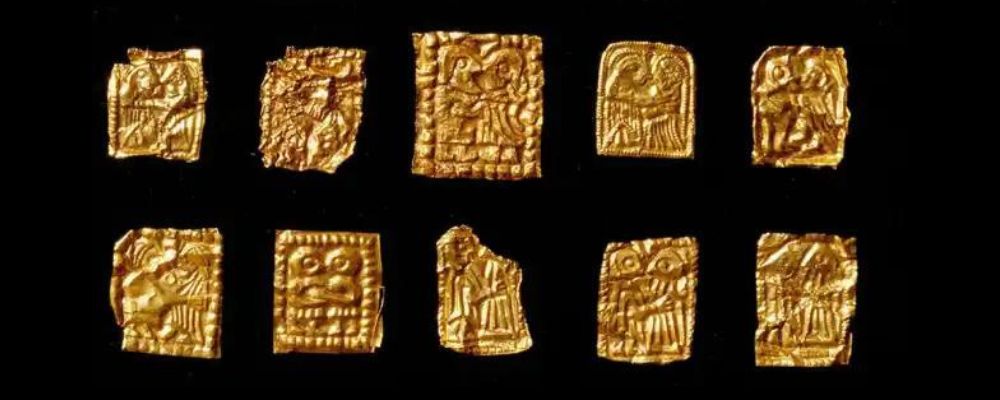
The 122 gullgubber found at Uppakra, Scania in Sweden were found in post holes and wall ditches for one building in the community.
This seems to suggest that they were placed there deliberately during construction, probably to consecrate the building, which was likely the village temple.
Golden Offerings
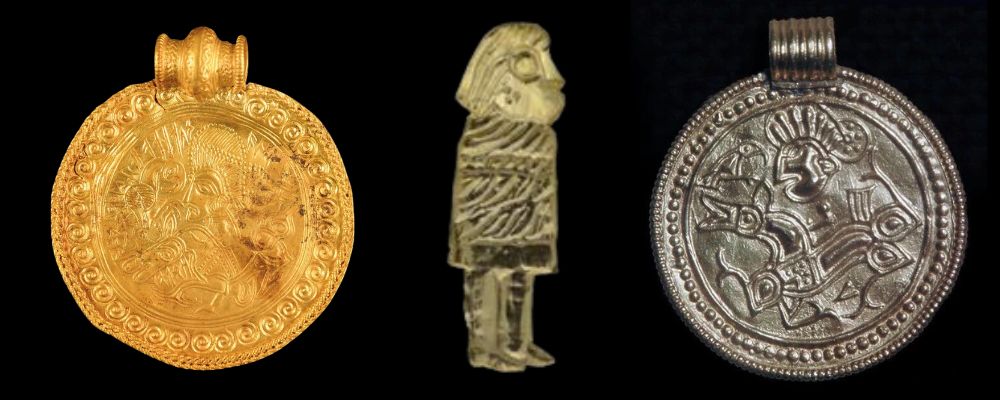
The fact that both bracteates and gullglubber were fine, thin pieces of gold that seem to have been placed in the ground as offerings to the gods suggest that they were related to one another.
Moreover, the fact that gullglubber appeared in the centuries after bracteates were no longer made suggests that they may have replaced the larger pieces that needed more gold.
In either case, it suggests that pre-Viking peoples already had already developed a fairly sophisticated belief system around their gods, which were depicted on these fine gold pieces, and believed that riches could be offered to the gods to invoke their favor, and that placing items in the ground was one method of transferring them to the divine.




